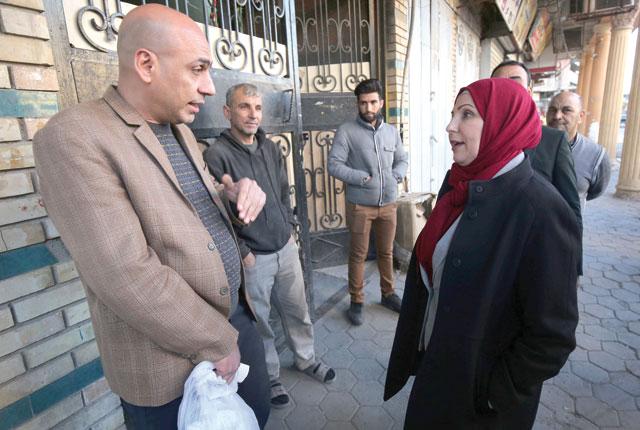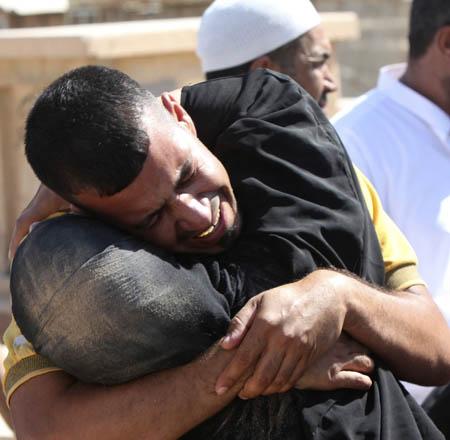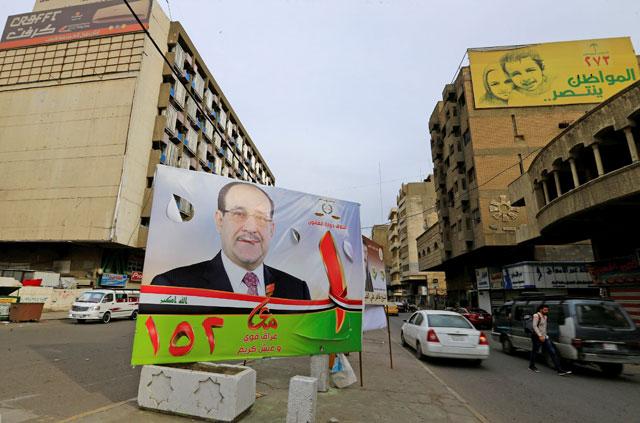You are here
Incomplete Saddam-era marquee mosque lays bare Iraq divisions
By AFP - Dec 05,2021 - Last updated at Dec 05,2021

This photo taken on November 16 shows a view of Al Rahman Grand Mosque in Al Mansour district of Iraq’s capital Baghdad, one of the last projects by late Saddam Hussein (AFP photo)
BAGHDAD — It was meant to compete with the Taj Mahal in grandeur, but former Iraqi dictator Saddam Hussein’s monumental Al Rahman Mosque project was never completed.
Instead, the half-finished edifice of grey concrete stands in the heart of Baghdad as testimony to the sectarian and political strife that has shaped much of Iraq’s modern history.
The aim was for the mosque, with a capacity for 15,000 worshippers, to be one of the largest in the Middle East.
Launched in the 1990s in the midst of a crippling Western embargo over Saddam’s invasion of Kuwait, the construction of the mosque was designed to be a snub to Washington.
But the dictator’s dreams of grandeur — along with them his iron-fisted rule — would come crumbling down with the 2003 US-led invasion.
Today, a vast hole gapes at the sky from where an 84 metre-tall, gold-adorned ceramic dome was supposed to cover the central prayer hall.
Around it, eight secondary domes 28 metres high, each flanked by eight smaller domes, stand in a suspended state of near completion.
Several cranes are frozen in time above the edifice, which towers over the upscale Mansur district of the capital.
“Unfortunately, we’ve neglected the country’s heritage,” architect and university professor Mohamed Qassem Abdel Ghaffour told AFP.
“These projects belong to all Iraqis, we should make use of this heritage, and turn them into cultural and touristic sites,” he added.
“All of this is Iraq’s money and the state must profit from it.”
Although it was initially built as a Sunni mosque, it was taken over by Shiite clerics after the fall of Saddam.
Today, it is a symbol of division between Shiites, now the dominant political force in Baghdad after decades of marginalisation in the Shiite-majority Arab state.
“After the fall of the old regime, the mosque fell under the control of the Islamic Virtue Party,” a senior government official who asked to remain anonymous told AFP.
“The party was never able to complete construction, because the costs are huge.”
Weapons of the parties
Saddam Hussein “wanted a mosque bigger than the Taj Mahal”, he recalled.
The Islamic Virtue Party has blocked government plans to turn the mosque into a university or museum, the official said.
Although the party’s takeover of the mosque remains unofficial, its members hold the main weekly prayers each Friday at noon under one of the secondary domes.
About 150 families have lived for years in makeshift homes that sprouted on vacant lots surrounding the mosque.
In January 2020, a court recognised the authority of the Shiite waqf — the institution that manages the community’s religious properties — over the mosque.
The verdict obliged the Islamic Virtue Party to pay $200 million in compensation, according to a statement from the waqf.
The waqf accuses the party of having occupied the site “for more than 16 years”, “without any legal or religious legitimacy”.
But the court ruling has not been enforced.
Activist Subeih Al Kachtini said that Iraqi security forces had tried several times to intervene.
“But faced with the weapons of the state, there are the weapons of the parties,” he said.
‘Architectural symbolism’
Development of land adjacent to the mosque to build a shopping centre or a housing complex could create up to 20,000 jobs, according to the waqf.
But “construction cannot resume until the mosque is removed from partisan conflicts”, Kachtini said, and the status quo remains.
For Caecilia Pieri, a researcher at the French Institute of the Near East, the mosque testifies to the “policy of architectural symbolism” of Saddam’s Baathist regime.
The late dictator’s approach could be summed up as: “I write Allah Akbar [God is Greatest] on the national flag and build mosques,” said Pieri, a specialist in the architecture of Baghdad in the 20th century.
Mazen Al Alussi, who headed the department in charge of conception and planning under Saddam, said the project was a “one of a kind” initiative.
The cost to complete the mosque need not be exorbitant, said Alussi. “It should be turned into a unified mosque where both Shiites and Sunnis can pray.”
Related Articles
BAGHDAD — The mayor of Baghdad wants to revive her war-torn city, fix its decrepit infrastructure and twin it with Paris — another female-le
Residents of a town north of Baghdad found 12 corpses with execution-style bullet wounds on Monday, after fighting between rival Sunni insurgent groups that could eventually unravel the coalition that seized much of the north and west of the country.
BAGHDAD — Former Iraqi Prime Minister Nuri Al Maliki fulfilled his life-long goal of wresting power from the country’s minority Sunnis after

















